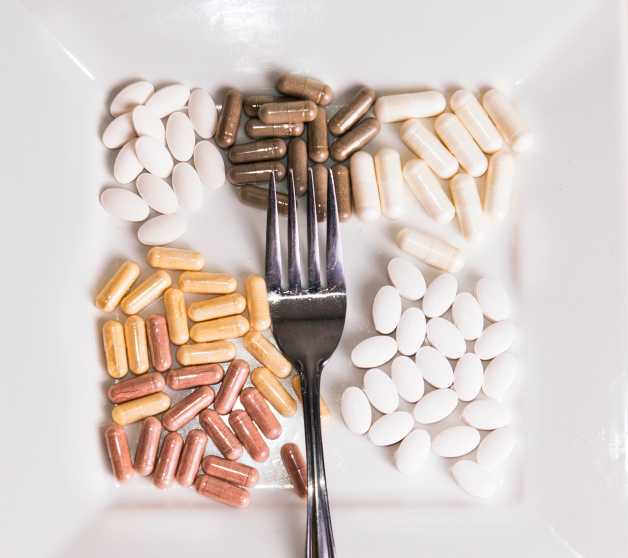 Today, I’m going to broach a subject that’s rather taboo but caught my attention this week when I was skimming through the most recent health news. For the most part, while it’s completely natural, we tend to shun it as “rude,” “immature,” or “embarrassing;” it really all depends on when it happens, the context, and whether you were the one who did it or not. What’s this topic I’m talking about that seems so inappropriate? Flatulence—or, more informally, farts.
Today, I’m going to broach a subject that’s rather taboo but caught my attention this week when I was skimming through the most recent health news. For the most part, while it’s completely natural, we tend to shun it as “rude,” “immature,” or “embarrassing;” it really all depends on when it happens, the context, and whether you were the one who did it or not. What’s this topic I’m talking about that seems so inappropriate? Flatulence—or, more informally, farts.
I know, I know, it doesn’t seem like it’s a serious subject to bring up in our Doctors Health Press eBulletin unless the topic is to explain how you can get rid of your gas, but I’m taking a different approach today. In a sense, it turns out that more gas—or rather, the type of gas—can be a good thing. In fact, it could be the secret to anti-aging and disease prevention!
Before you dismiss this notion as ridiculous, let me explain…
Like most people, before reading this one report at the beginning of the week, I thought gas was a bad thing; the “rotten egg” smell was even worse. So I was shocked to learn that the gas that creates this rotten smell not only occurs naturally as hydrogen sulfide, but it actually plays a key role in mitochondrial health, which is the key to fighting the health effects of aging.
You see, the body produces this gas naturally, but only in small amounts, which is why a team of researchers set out to create a more concentrated compound with hydrogen sulfide for targeted use in anti-aging and disease prevention. This compound is “AP39,” and while it’s still in the early stages of development, the preliminary results look positive.
In more detail, what hydrogen sulfide does is prevent the decay of a cell’s “powerhouse,” mitochondria. Cellular decay is known to be the root cause of aging and age-related diseases, including diabetes, stroke, heart failure, and arthritis (mitochondria also play a role in helping to prevent inflammation). When stressed by disease, mitochondria draw in hydrogen sulfide to stimulate cellular turnover. Simply put, by boosting hydrogen sulfide using targeted treatments of mitochondria, we may be able to prevent many age-related diseases. Makes you think a little more about your negative preconceptions of gas, doesn’t it?
Unfortunately, with this compound only in its early stages of development, it won’t be available for a while. In the meantime, though, there is a simple way to boost the health of your mitochondria: food!
Generally speaking, today’s typical North American diet—which tends to support blood sugar imbalances, nutritional deficiencies, and a ridiculous amount of the wrong fatty acids—doesn’t do your cells any favors. So the first step to preventing cellular decay is making sure you’re eating a diet full of vitamins, minerals, antioxidants, and good fats, meaning you should fill your plate with lots of fruits and vegetables, whole grains, and lean proteins.
Try adding lots of lemon or lime juice to your meals or, if you’re brave enough, eat a lemon or lime like an orange. Some other spices with great health benefits for your cells’ health are cinnamon, turmeric, rosemary, and ginger. As for vitamins, try boosting your intake of foods full of vitamins D, D3, B12, and B6, the antioxidant coenzyme Q10, and zinc, along with other trace minerals.
While a concentrated compound for anti-aging may not be available yet, healthy foods that prevent cell decay certainly are, so start loading your plate with mitochondria-supporting nutrients today for better health tomorrow.
Sources for Today’s Article:
Jockers, D., “Boost mitochondrial function naturally,” Natural News web site, April 8, 2011; http://www.naturalnews.com/031997_mitochondria_support.html, last accessed July 14, 2014.
“‘Rotten egg’ smell could lead to a raft of health therapies: study,” CTV News web site, July 14, 2014; http://www.ctvnews.ca/health/rotten-egg-smell-could-lead-to-a-raft-of-health-therapies-study-1.1912866.
Wood, M.E., et al., “The synthesis and functional evaluation of a mitochondria-targeted hydrogen sulfide donor, (10-oxo-10-(4-(3-thioxo-3H-1,2-dithiol-5-yl)phenoxy)decyl)triphenylphosphonium bromide (AP39),” Med. Chem. Commun. 2014; 5: 728–736, doi: 10.1039/C3MD00323J.
